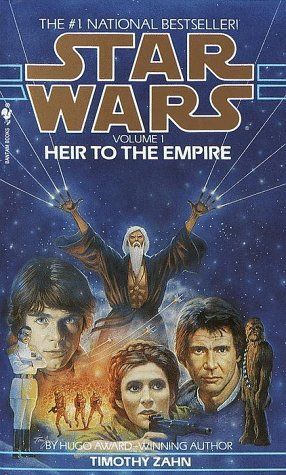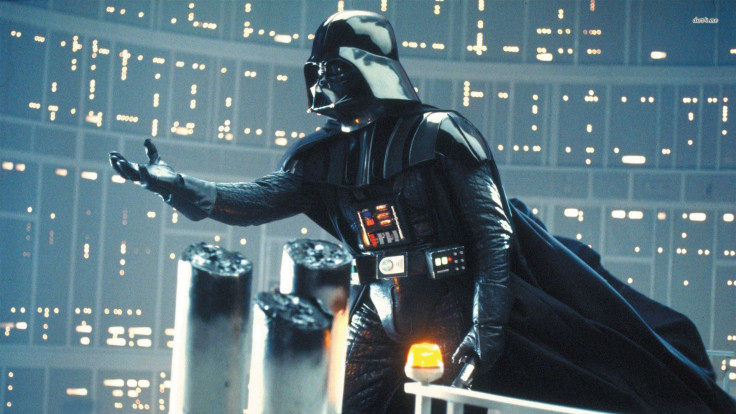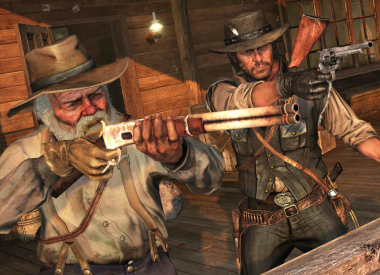“Star Wars: Episode 7 The Force Awakens” comes out Dec. 18 of this year, giving us 340 days to imagine a new “Star Wars” trilogy, our first glimpse at the days after the destruction of the Second Death Star and the fates of characters who have not been seen since 1983, when “Star Wars: Episode VI Return of the Jedi” was released in theaters. But while our only real glimpse at “Star Wars 7: The Force Awakens” has been from the official “Star Wars” teaser trailer, there’s already a rich future plotted out in the “Star Wars” Extended Universe (now reduced to non-canonical “Star Wars Legends”), especially in the pages of the seminal “Star Wars” book series known as The Thrawn Trilogy.
The Thrawn Trilogy, by Timothy Zahn, is made up of three novels, all set after the fall of the Death Star II in “Star Wars: Episode VI Return of the Jedi”: Heir to the Empire, Dark Force Rising, and The Last Command. The Thrawn Trilogy will not be the basis of “Star Wars 7: The Force Awakens,” but its timeline for the further adventures of Luke Skywalker made such an impression on the Expanded Universe identity of the “Star Wars” universe that it’s hard to imagine that the fingerprints of The Thrawn Trilogy will be entirely absent from “Star Wars 7: The Force Awakens.”
With that in mind, let’s read The Thrawn Trilogy together and imagine the “Star Wars” sequels that could have been.
“Star Wars: The Force Awakens” That Could Have Been
The Thrawn Trilogy
Heir to the Empire Chapter 1

Chapter 1
The Thrawn Trilogy opens on the Imperial Star Destroyer “Chimaera,” helmed by Captain Pellaeon. Pellaeon is the exact kind of graying, stuffed shirt you’d expect from a “Star Wars” villain. Our first moment with Pellaeon has him berating a duty officer for delivering messages in an impolite manner. Had Darth Vader survived, Pellaeon is just the kind of competent bureaucrat he’d wind up Force Choking.
“Star Wars”: Darth Vader Force Chokes Admiral Ozzel
While the conclusion to “Star Wars: Episode VI Return of the Jedi” seemed to have writ a conclusive end to the wicked Empire, the opening of The Thrawn Trilogy shows that taking down a Galaxy-spanning army of British space-Nazis doesn’t happen all at once. It seems the New Republic is off to a good start, but is still fighting, star system-by-system, to wrest influence from whatever is left of The Empire’s immense fleet.
While Pellaeon feels very much like a faceless “Star Wars” Imperial Officer, he’s hardly main villain material, which is why the first chapter of The Thrawn Trilogy also introduces us to Grand Admiral Thrawn. In Chapter 1 Thrawn is presented as the real deal: a brilliant and terrifying military strategist who Pellaeon believes to be a better tactical mind than Darth Vader or Emperor Palpatine ever were.
After providing a lecture on pre-Imperial Saffar paintings, Thrawn wipes out a superior force of attacking New Republic assault frigates and X-wings. We are all dutifully impressed by his abilities, just in time for Grand Admiral Thrawn to announce the discovery of new intel pointing to the planets of Myrkr and Wayland, both of which have pieces to a puzzle that could spell “the complete, total, and utter destruction of the Rebellion.”
The Thrawn Trilogy feels like “Star Wars.” Getting back into the “Star Wars” vibe is smooth, with quick work done to establish the familiar Star Destroyer bridge and that evil, bureaucratic, boot-clicking fussiness we associate with Empire’s military officers.
But while The Thrawn Trilogy is unquestionably “Star Wars,” the first chapter of Heir to the Empire is more remarkable for what’s trying to do different from “Star Wars.”
For one, The Thrawn Trilogy makes explicit what “Star Wars” fans often read into the movie, especially the first scene with the council of Admirals where Grand Moff Tarkin stops Darth Vader from killing Moff Jerjerrod: there is tension between the political and military factions of The Empire.
“Star Wars”: Darth Vader Force Chokes Moff Jerjerrod
Captain Pellaeon bemoans the Emperor’s obsession with the Death Stars, which he saw as a “blatant attempt to bring the Empire’s vast military power more tightly under his direct control.” The true loss at the Battle of Endor, according to Captain Pellaeon, was not the destruction of the Death Star, or even the death of the Emperor, but the loss of Super Star Destroy Executor (which crashed into the surface of the Death Star). This does a good job of explaining the Empire’s continued tenacity after the fall of the Sith in the original “Star Wars” trilogy, plus validates my long-held theory that Darth Vader is more like a meddling Pope than a part of the military chain of command.
“Star Wars” Imperial Motivators: The Destruction of the Executor
This contrast--between the cold, bureaucratic evil of the Empire’s army and the religious zealotry of Darth Vader—provides quick proof that the Empire doesn’t need Emperor Palpatine to continue motivating a war against the Rebellion (and now the New Republic).
Star Wars Villains: Thrawn vs. Vader
This new “Star Wars” Empire feel finds its purest form in Grand Admiral Thrawn, who is meant to replace Darth Vader in our villain-loving hearts. Grand Admiral Thrawn is big, blue and intimidating. His eyes glow red. But his physical intimidation is where all similarities to Darth Vader end. Grand Admiral Thrawn is calm, cultured, and not remotely a zealot driven by constant religious visions (an uncharitable view of Darth Vader’s Force feelings I know). Grand Admiral Thrawn’s main weapon is knowledge, with his military tactics coming down to a cultural understanding of the enemy and a repertoire of tactical maneuvers gathered through a great deal of book learnin’.
It’s not so much that Darth Vader was a putz when it came to strategy (though pursuing the Millennium Falcon into an asteroid field didn’t seem to work out to well for him), but it was never his emphasis. Darth Vader was driven by mysticism, rather than politics. And while there may have always been a plan in mind (especially if Emperor Palpatine is to be believed), Darth Vader proceeds more on instinct than clear, deliberative steps. Grand Admiral Thrawn feels like the opposite, the pinnacle of what an Imperial Officer, who cares nothing for The Force, can achieve (I’m going to feel dumb when Thrawn busts out Force powers left and right, aren’t I?).
Will this promising introduction to Grand Admiral Thrawn make him a worthy adversary for Luke Skywalker and the New Republic? We’ll find out in subsequent chapters of Timothy Zahn’s The Thrawn Trilogy.
Are you reading along with me? Read The Thrawn Trilogy before? Prefer Star Trek? Let me know in the comments or at @AndWhalen.
Other "Star Wars 7" Book Club Chapters:
- Star Wars: The Force Awakens That Could Have Been, Thrawn Trilogy Chapter 1
- Star Wars: The Force Awakens That Could Have Been, Thrawn Trilogy Chapter 2
- Star Wars: The Force Awakens That Could Have Been, Thrawn Trilogy Chapter 3
- Star Wars: The Force Awakens That Could Have Been, Thrawn Trilogy Chapter 4
- Star Wars: The Force Awakens That Could Have Been, Thrawn Trilogy Chapter 5
- Star Wars: The Force Awakens That Could Have Been, Thrawn Trilogy Chapter 6 and 7
- Star Wars: The Force Awakens That Could Have Been, Thrawn Trilogy Chapter 8 and 9



















